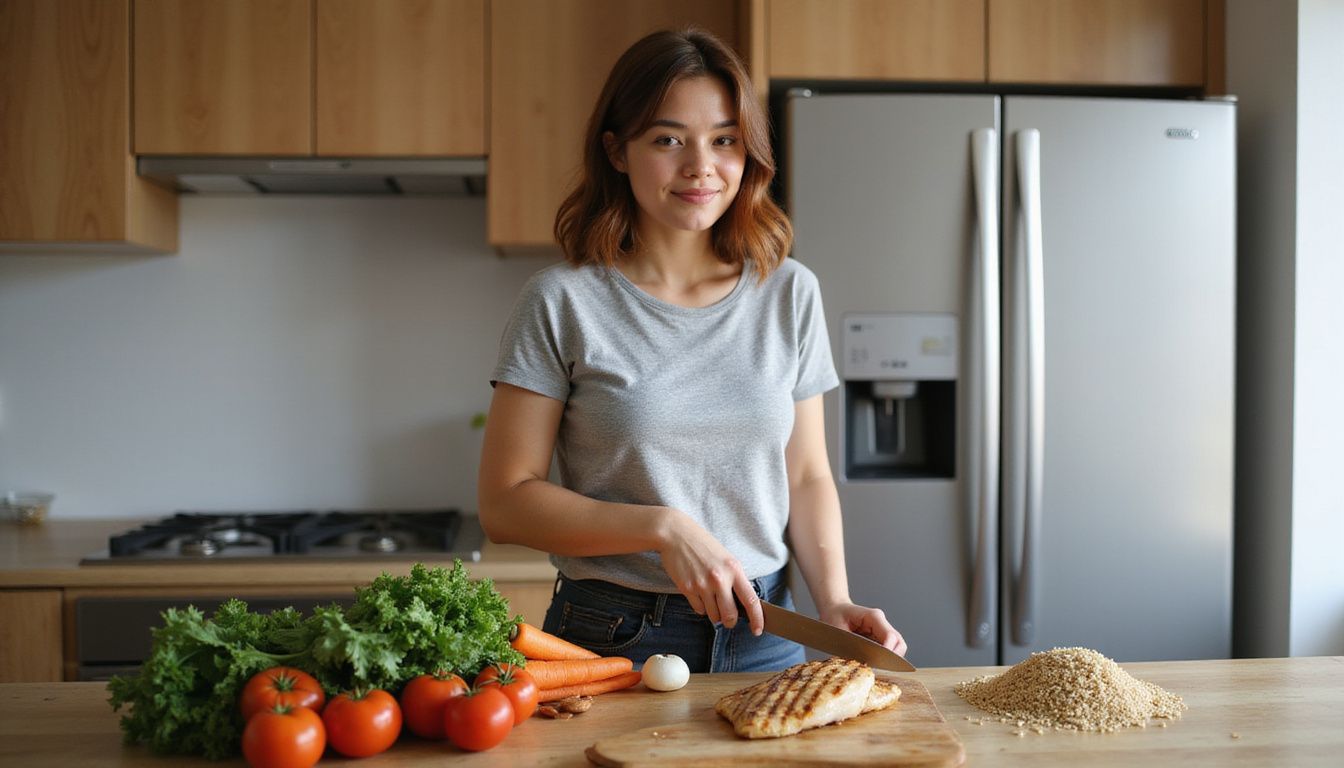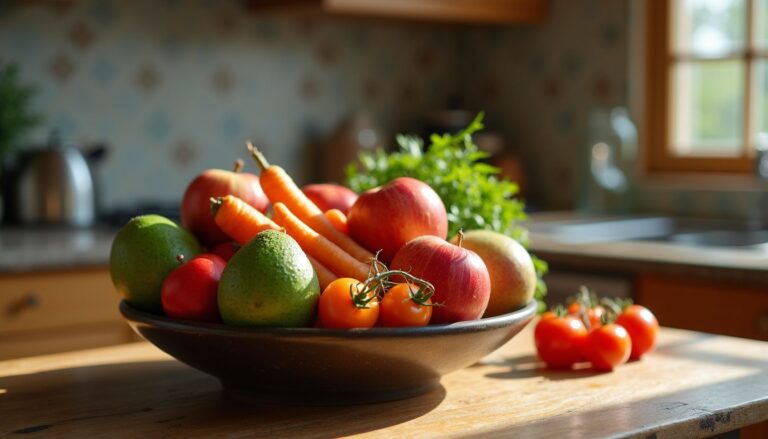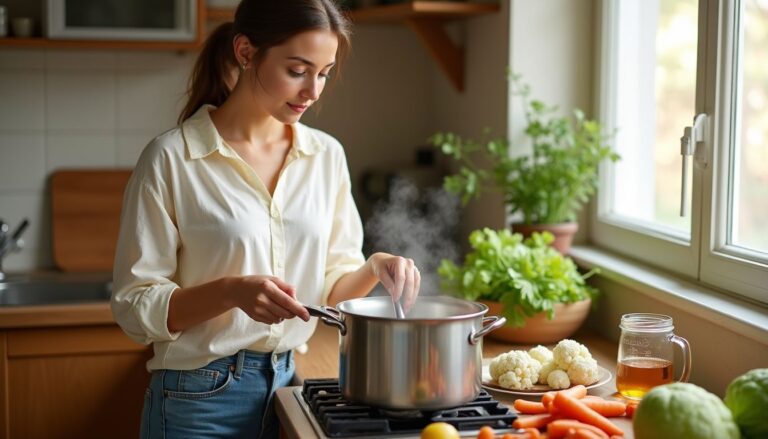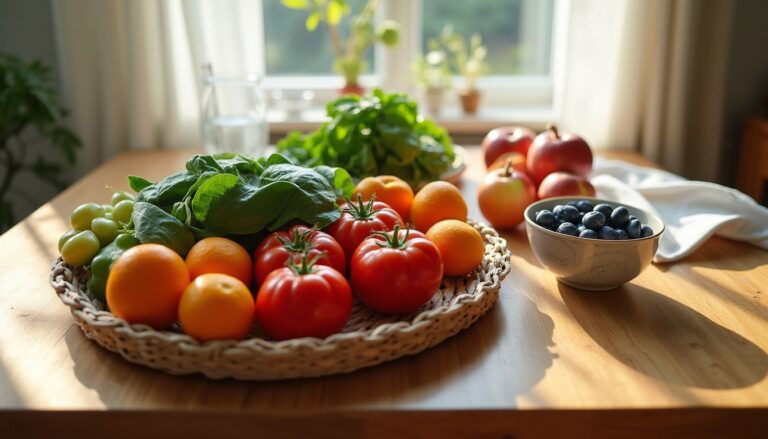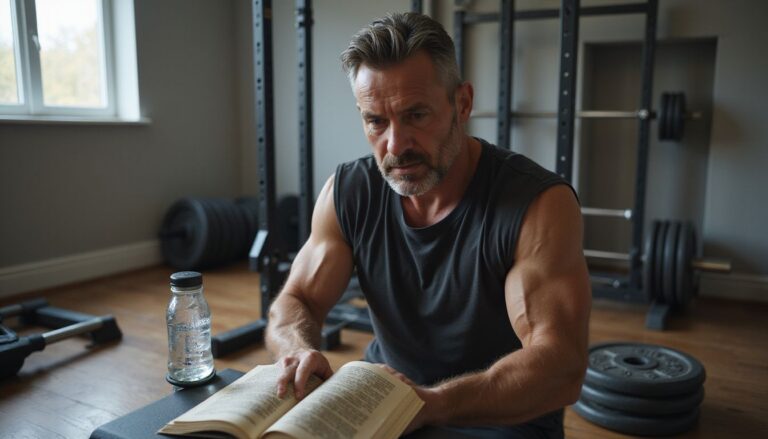Discover The Best Foods For Weight Loss And Start Losing Weight Today!
Our Nutrition Assistant AI Suite will transform your body. You will lose fat, get toned, and build muscle. Gain confidence and optimal health.
Trying to lose weight can feel confusing. You hear many tips, but not all are clear. Focusing on healthy foods with low energy density makes it easier to eat fewer calories and still feel satisfied. You will see how smarter food choices lead to steady results and better weight management.
This guide walks you step by step through the best foods, simple swaps, and portion ideas. You will find a practical plan based on research from credible sources like the Mayo Clinic and the Dietary Guidelines for Americans. Start with small changes, and build a pattern you can keep.
Key Takeaways
- Low energy density foods, like fruits, vegetables, lean protein, and whole grains, help you feel full on fewer calories; the Mayo Clinic Healthy Weight Pyramid supports this approach.
- High protein options, such as eggs, chicken breast, fish, Greek yogurt, beans, lentils, and tofu, support muscle and satiety, which can reduce daily calorie intake.
- Fiber-rich choices, including leafy greens, cruciferous vegetables, oats, quinoa, and berries, slow digestion and are linked with lower body fat in clinical studies.
- Healthy fats from avocados, nuts, olive oil, and fatty fish fit in small portions and support heart health, as recommended by the American Heart Association.
- Water before meals can lower energy intake. Green tea, rich in catechins, may raise daily calorie burn by about 3 to 4 percent.

Key Concepts in Weight Loss and Nutrition
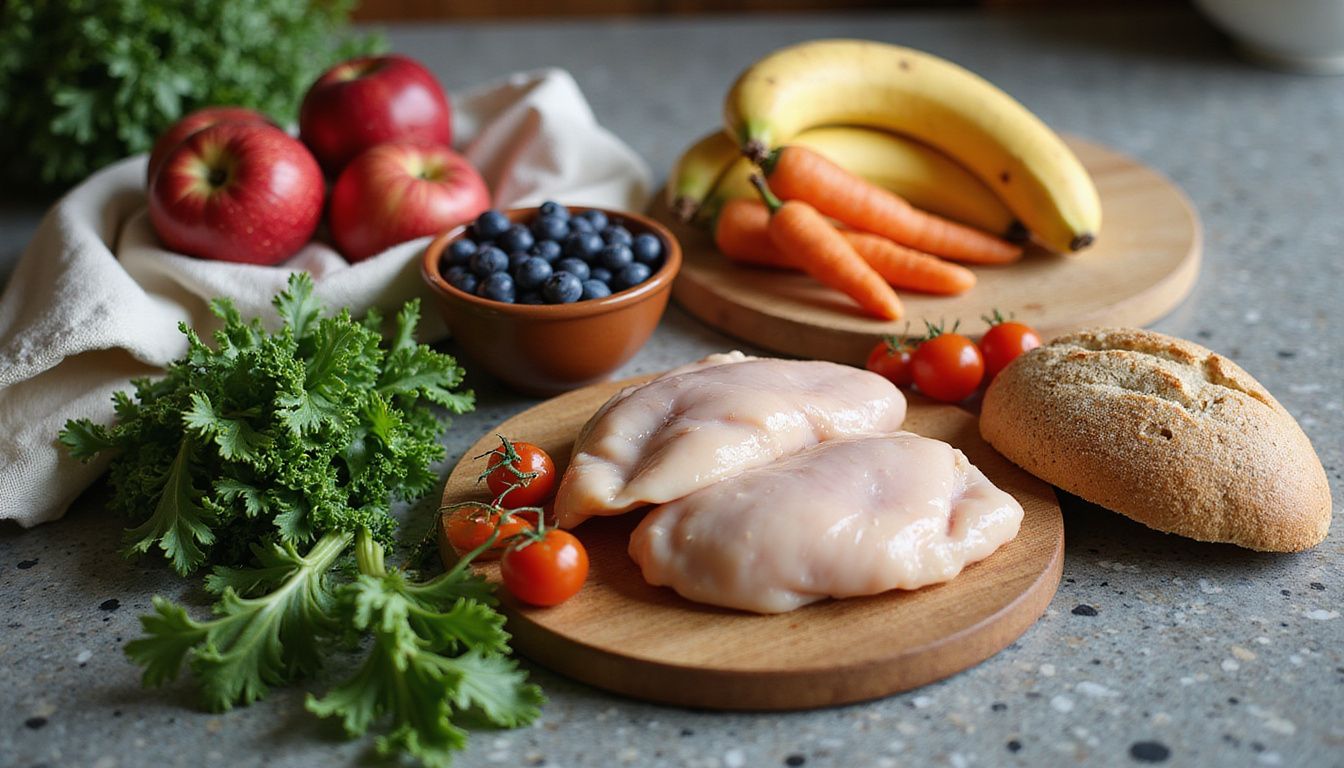
Understanding a few core ideas helps you choose healthy foods for weight loss. Energy density means how many calories are packed into each bite. Lower is better when you want larger portions with fewer calories.
Why is a balanced diet important for weight loss?
A balanced diet gives your body the nutrients it needs while you cut calories. Filling your plate with fruits, vegetables, and whole grains keeps meals low in calories yet high in fiber and vitamins. This supports steady energy and fewer cravings.
Plans like the Mayo Clinic Healthy Weight Pyramid center meals on water-rich and fiber-rich foods. These foods help you feel full longer. Lean protein, such as chicken breast, beans, or Greek yogurt, adds staying power without much saturated fat.
Including low-fat dairy supports calcium and vitamin D intake while you manage portion size. Health agencies, including the Department of Health and Human Services, endorse this sustainable pattern for long-term results.
Balanced eating patterns, paired with consistent habits, set you up for long-term weight loss success.
How does calorie density affect weight loss?
Low calorie density foods help you manage hunger. For about 250 calories, you could choose a small order of fries or a much larger amount of produce, like 10 cups of spinach, 1.5 cups of strawberries, and one small apple.
Foods high in water and fiber, such as fruits and vegetables, give more volume per calorie than fried or sugary items. Air-popped popcorn is a good example. One cup has about 30 calories. A cup of raisins has roughly 480 calories, while grapes are about 104 per cup due to their water content.
High fiber meals slow digestion and boost fullness. Building your diet around these foods supports steady, realistic progress.
What Are the Best Protein-Rich Foods for Weight Loss?
Protein helps you feel full and protects muscle during calorie restriction. Keeping muscle supports your metabolism, which helps you lose weight more efficiently.
Are eggs good for weight loss?
Eggs are rich in protein and healthy fats, and they keep you satisfied for hours. Trials show egg breakfasts increase fullness for several hours compared with cereal-based meals. That can lower calorie intake later in the day.
Eggs are affordable, fast to cook, and fit well in a balanced breakfast. Scramble two eggs with spinach, or boil them ahead for grab-and-go protein.
A protein-rich breakfast, like eggs, can reduce later snacking, according to USDA-reviewed research.
How do chicken breast and lean meats help with weight loss?
Chicken breast and other lean meats, such as skinless turkey or lean steak, deliver high protein with little saturated fat. This combination helps control hunger and supports muscle maintenance as you cut calories.
Choose grilling, baking, or broiling instead of frying. Three ounces of cooked skinless chicken breast provide about 26 grams of protein and only 2 to 3 grams of total fat. This makes it easier to hit your calorie goals without extra saturated fat.
Can fish and shellfish aid weight loss?
Fish and shellfish supply high-quality protein and helpful nutrients. Fatty fish, like salmon, tuna, sardines, and mackerel, offer omega-3 fatty acids that support heart health. Many experts suggest eating them twice a week.
Protein from fish may slightly raise the calories you burn during digestion. Reviews link regular seafood intake with better weight loss outcomes compared with lower seafood diets.
Try grilled cod with vegetables, or mix cooked shrimp into a Greek yogurt salad for a satisfying, lower calorie lunch.
What benefits do Greek yogurt and low-fat dairy provide?
Greek yogurt is high in protein and contains live probiotics, which can support gut health. A healthy gut may relate to lower body fat in some studies. Low-fat cottage cheese offers protein with fewer calories than many cheeses.
Low-fat milk and yogurt deliver calcium and vitamin D, both important for bone health. Some research links higher calcium intake with healthier body weight, though more study is needed for clear guidance.
How do beans, lentils, and tofu support weight loss?
Beans, lentils, and tofu provide a powerful mix of protein and fiber. This combination slows digestion and helps you stay full. A serving of cooked lentils gives about 8 grams of protein and 8 grams of fiber, plus iron.
Black beans, chickpeas, and kidney beans also contain resistant starch, a carbohydrate that resists digestion and may help appetite control. Tofu and tempeh offer plant protein with few calories and little saturated fat.
Which Fiber-Rich Foods Help You Feel Full Longer?
Fiber acts like a natural speed bump for digestion. It helps control hunger and supports healthy blood sugar levels.
How do leafy greens like spinach and kale support weight loss?
Leafy greens are very low in calories and high in nutrients. You could eat about 10 cups of spinach for the same calories as a small order of fries, roughly 250 calories. That volume fills your stomach and lowers the chance of overeating.
Add greens to omelets, soups, or grain bowls. Mixing chopped kale with brown rice or quinoa gives texture, fiber, and longer-lasting fullness.
What role do cruciferous vegetables play in satiety?
Cruciferous vegetables, such as broccoli, cauliflower, and cabbage, combine fiber and water. This slows digestion and supports lasting fullness. Research links higher intake of these vegetables with lower body fat in adults with type 2 diabetes.
Try roasting broccoli or sautéing cauliflower with olive oil, garlic, and lemon. You get a satisfying side with few calories.
Why include whole grains such as quinoa, oats, and brown rice?
Whole grains beat refined grains for fullness and steady energy. Oatmeal offers soluble fiber that supports blood sugar control and morning satiety. Quinoa and brown rice add fiber and minerals without many extra calories.
Swapping white bread for oatmeal or quinoa can reduce mid-morning hunger. Seeds like chia also pair well with yogurt or oats and may increase fullness at the next meal.
Are fruits like berries, apples, and oranges good for weight loss?
Yes. Fruits are low in calories and high in fiber and water. One and a half cups of strawberries plus a small apple is about 250 calories, yet very filling.
Choose fresh or frozen fruit without syrup. Whole fruit usually beats fruit juice and dried fruit for fullness and calorie control.
How do seeds like chia, flax, and sunflower contribute to fullness?
Chia, flax, and sunflower seeds bring fiber and healthy fats. A 14 gram serving of chia provides about 5 grams of fiber. Studies show adding small amounts of chia to yogurt increases fullness and lowers intake at the next meal.
Sprinkle seeds over oatmeal or stir them into Greek yogurt. A spoonful in a smoothie can help you stay satisfied until lunch.
Healthy Fats That Support Sustainable Weight Loss
Healthy fats add flavor, help absorb vitamins, and keep you satisfied. They belong on your plate, but portions should stay moderate.
What weight loss benefits do avocados offer?
Avocados supply monounsaturated fat, fiber, water, and potassium. This mix supports heart health and steady energy. A small portion feels creamy and satisfying, which can reduce the urge to snack.
Add a quarter of an avocado to salads or whole grain toast. The fat helps your body absorb vitamins from vegetables and eggs.
How do nuts and seeds like almonds and walnuts help?
Nuts and seeds deliver healthy fats, plant protein, and fiber. These nutrients support fullness and better appetite control. A small handful can be very satisfying compared with many snack foods.
Stick to one ounce per serving, about a small handful. Almonds, walnuts, pistachios, and pumpkin seeds are smart picks. They are calorie dense, so measure portions.
Why include fatty fish such as salmon and tuna?
Fatty fish provide omega-3 fatty acids and protein, a helpful pair for heart and metabolic health. A 3 ounce portion of salmon has around 22 grams of protein plus healthy fats, with fewer calories than many red meats.
Plan two seafood meals per week. Try grilled salmon over leafy greens, or tuna mixed with olive oil and lemon on whole grain toast.
What role does olive oil play in a weight loss diet?
Olive oil is rich in monounsaturated fat. Use it in place of butter or creamy dressings. It can enhance flavor and improve nutrient absorption from vegetables.
One tablespoon has about 120 calories, so keep portions small. A teaspoon to sauté vegetables or a light drizzle on salads adds taste without overshooting calories.
Foods with Unique Benefits for Weight Loss
Some foods offer small but useful advantages, especially when you already follow a balanced plan.
How do chili peppers boost metabolism?
Chili peppers contain capsaicin, a compound that increases body heat and may slightly raise calorie burn after meals. This effect is modest, but it can support your plan.
Add sliced chilies to eggs, soups, or salsa for flavor and variety. Even a little heat can make simple meals more satisfying.
Are potatoes and root vegetables good for weight loss?
Boiled white potatoes score high on the Satiety Index, which means they help you feel full. Cooling cooked potatoes increases resistant starch, a type of carbohydrate that may support appetite control.
Bake, roast, or boil instead of frying. Root vegetables like carrots supply fiber and vitamins for very few calories.
What makes cottage cheese beneficial for weight loss?
Low-fat cottage cheese is high in protein and relatively low in calories and fat. Protein supports fullness and muscle maintenance, which is helpful during weight loss.
| Nutrient | Amount per 1 cup, low-fat |
|---|---|
| Calories | ~206 |
| Protein | ~27 g |
| Fat | ~2 to 3 g |
| Carbohydrates | ~6 g |
Blend cottage cheese into smoothies, pair it with fruit, or enjoy it savory with sliced tomatoes and pepper.
Why choose low-calorie, broth-based soups?
Starting a meal with a clear vegetable soup can increase fullness and reduce calories eaten in the main course. Broth or tomato bases usually beat creamy soups for calorie control.
Soups take time to sip and smell, which helps your brain register fullness. Add vegetables, beans, or chicken for bulk. A sprinkle of sunflower seeds adds crunch with little extra energy.
How does green tea support weight loss?
Green tea contains catechins, a type of antioxidant. Catechins may slightly raise metabolism and fat burning. Research suggests daily calorie burn can increase by about 3 to 4 percent.
Drink it hot or iced without sugar. It hydrates you with almost no calories, which helps your daily energy balance.
How Can You Incorporate Weight-Loss Foods Into Your Diet?
Small, daily choices make progress add up. Think simple swaps and repeatable routines.
Why fill half your plate with fruits and vegetables?
Filling half your plate with produce lowers calorie intake while keeping volume high. This helps you feel full on fewer calories. The Mayo Clinic Healthy Weight Pyramid supports this strategy.
Use a mix of colors for a wider range of nutrients. For example, pair kale and berries with whole grain toast for fiber and flavor.
How to choose lean protein sources at every meal?
Add one palm-sized portion of lean protein to each meal. Good picks include grilled chicken breast, salmon or tuna, turkey, eggs, Greek yogurt, tofu, lentils, and black beans.
These foods support muscle and satiety while keeping calories in check. Use canned tuna or beans for fast meals, and limit processed meats like bacon or sausage.
How does including fiber-rich foods help you stay full?
Fiber from whole grains, beans, fruits, and vegetables slows digestion and steadies blood sugar. That means longer-lasting energy and fewer cravings.
High fiber diets are linked with lower body fat in research. Try oatmeal with berries for breakfast, or add lentils to soup for an afternoon boost.
What is the right way to use healthy fats?
Pair fiber-rich foods with small amounts of healthy fats for flavor and better vitamin absorption. Use olive oil, avocado, nuts, or seeds in measured portions.
Replace saturated fats, like butter, with monounsaturated fats, like olive oil. Aim for 1 tablespoon of olive oil per salad, or 1 ounce of almonds as a snack. Replacing saturated fat with healthier fats supports heart health and satiety during meals[1]. Swapping butter on toast for smashed avocado is one easy change.
[1] Source: American Heart Association, “Healthy Eating,” 2023.
Why is staying hydrated important during weight loss?
Water can curb appetite and support metabolism for a short time. Drinking water before meals often leads to lower calorie intake because you feel full faster.
As a simple goal, aim for about half your body weight in ounces each day. Proper hydration also helps workouts feel easier, which supports your plan.
Common Questions About Weight Loss Foods
These answers help you cut through common confusion and focus on what works.
Which foods help burn belly fat?
No single food targets belly fat. Losing overall body fat reduces waist size. Focus on protein-rich foods, such as lean meats, fish, legumes, and dairy, to preserve muscle and promote fullness.
Add fiber-rich foods like broccoli, lentils, oatmeal, and berries to help control appetite. Chili peppers may slightly raise calorie burn. Combine these with leafy greens and options like cottage cheese to keep calories lower and nutrition high.
Are low-calorie foods always better for losing weight?
Calorie count matters, but quality matters too. Some low-calorie snacks are highly processed and leave you hungry soon after. That often leads to overeating later.
Choose nutrient-dense, low energy density foods, such as vegetables, fruits, whole grains, and Greek yogurt. They keep you full longer than sugary snacks, even when the calories look similar on the label.
What foods provide long-lasting energy for workouts?
For steady energy, eat complex carbohydrates, protein, and a little healthy fat. Oatmeal, quinoa, brown rice, fruits, vegetables, and beans provide slow-digesting carbohydrates and fiber.
Lean proteins, like fish, chicken, tofu, and Greek yogurt, support recovery. Nuts or seeds add staying power. Hydration ties it all together so you can train well.
How to Build a Sustainable Weight Loss Plan
A plan you can keep beats a strict plan you abandon. Think progress, not perfection.
How to balance nutrition with physical activity?
Fuel workouts with a mix of lean protein, whole grains, and healthy fats. Strength training builds muscle that burns more calories at rest. Even short sessions add up.
Track meals and movement to spot patterns. Many people feel better with eggs or Greek yogurt after exercise because protein helps recovery and satiety.
Why avoid fad diets and quick fixes?
Fad diets often cut entire food groups or set strict rules that are hard to keep. Quick weight loss can cause muscle loss, fatigue, and rebound weight gain.
Most people do best losing about 1 to 2 pounds per week. A balanced pattern with fruits, vegetables, whole grains, and lean protein supports steady, healthier progress.
When should you consult a healthcare professional or dietitian?
Talk with your doctor before starting a new weight loss program or making major exercise changes, especially if you have a medical condition. A registered dietitian can tailor a plan to your needs and help you set realistic goals.
If you struggle with guilt around food or restrictive patterns, reach out for help. The National Alliance for Eating Disorders offers daytime support. The Substance Abuse and Mental Health Services Administration is available 24 hours at 1-800-662-4357, TTY 1-800-487-4889.
Conclusion
Choosing healthy foods with low energy density helps you lose weight while feeling satisfied. Fill half your plate with fruits and vegetables, add lean protein, and include whole grains. Use small portions of healthy fats to boost flavor without adding many calories.
Simple habits, like drinking water before meals and swapping refined grains for whole grains, support lasting progress. Tools such as the Mayo Clinic Healthy Weight Pyramid can guide your meal planning. For safety, speak with a healthcare professional before making major changes.
Start with one change today. Small steps, repeated often, lead to a healthier weight and better well-being.
FAQs
1. What are the best foods for weight loss and how do they help?
Foods high in fiber, such as lentils and black beans, keep you full longer. Lean proteins like chicken breast or cod support muscle while reducing hunger. Leafy greens including spinach provide vitamins with few calories. Studies show that people who eat more vegetables and whole grains tend to lose more weight over time (Harvard T.H. Chan School of Public Health).
2. How much protein should I eat daily to support weight loss?
Research suggests adults aiming for weight loss benefit from 0.6 to 0.8 grams of protein per pound of body weight each day (American Journal of Clinical Nutrition). For example, a person weighing 150 pounds would need about 90 to 120 grams daily.
3. Can eating fruit help me lose weight faster?
Fruits like apples, berries, and grapefruit offer fiber and water which promote fullness without adding many calories. A study published in PLOS Medicine found that higher fruit intake is linked with greater long-term fat reduction.
4. Is it better to avoid all fats when trying to lose weight?
Not all fats hinder progress; healthy sources such as olive oil or avocado can improve satiety and heart health when eaten in moderation (Journal of the Academy of Nutrition and Dietetics). Replacing processed snacks with nuts helped me feel satisfied between meals during my own journey.
Summary: Choosing nutrient-dense foods rich in fiber, lean protein, fruits, vegetables, and healthy fats supports steady fat reduction according to scientific evidence; these choices also make sticking with a lower-calorie plan easier over time.

